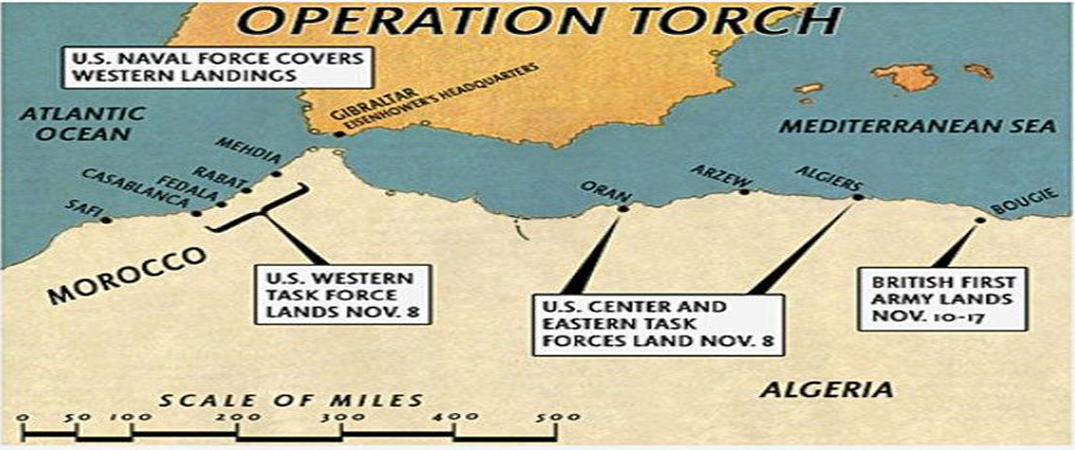
Operation Torch(initially called Operation Gymnast) was the landing and Tunisia's progress toward Anglo-American troops in World War II during the campaign in North Africa, launched on 8 November 1942.
The Soviet Union had pressed the United States and Britain to start operations in Europe and open a second front to reduce the pressure of the German forces on the Soviet Union. While U.S. commanders recommended Operation Sledgehammer, landing in Occupied Europe as soon as possible, the British commanders believed that such action would end in disaster.
Instead, they proposed an attack on French North Africa, which would clear the Axis from North Africa, improve naval control of the Mediterranean, and prepare an invasion of southern Europe in 1943. U.S. President Roosevelt doubted that the operation scrapped the African invasion of Europe in 1943 but agreed to support Churchill.
The Allies planned an Anglo-American invasion of northwest Africa, Morocco, and Algeria, territory nominally held by the Vichy French government. It was initially proposed to land on the border between Algeria and Tunisia, but this was quickly dismissed as too risky.
The Vichy French had about 60,000 troops in Morocco and coastal artillery, a handful of tanks and planes, with 10 warships and 11 submarines at Casablanca. The forces in North Africa of Vichy France reached a total of 100,000 soldiers.
The Allies believed that the Vichy French forces would not fight, partly because of the information provided by the U.S. consul in Algiers, Robert Daniel Murphy. However, he had suspicions that the Vichy Navy had a grudge over the British action at Mers el-Kebir (near Oran) in 1940 (the Battle of Mers el-Kebir).
It was essential to an appreciation of the sympathy of the French forces in North Africa, and plans were made to ensure their cooperation instead of promoting resistance. The Allies proposed to rush eastward to Tunisia and attack the German forces in the rear. General Dwight Eisenhower commanded the operation and established the base in Gibraltar. The naval commander of the Allied Expeditionary Force was Andrew Cunningham, and his second was Admiral Sir Bertram Ramsay, who would plan the effort of landing.
On 8 November, 600 vessels landed 70,000 Anglo-American soldiers in Safi, Casablanca, Oran, and Algiers. Fierce battles were fought in Oran. However, diplomacy convinced Admiral François Darlan, the commander of Vichy in Africa, to pass to the Allies. Thus, on 11 November, Darlan, who was commanding the French forces, allowed the Allies to go in a hurry to Tunisia. General Charles de Gaulle protested to Eisenhower for having to give it in his post but was not heard.
